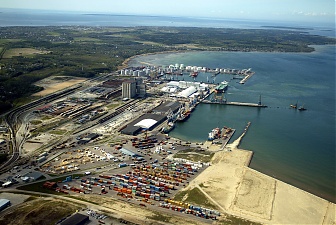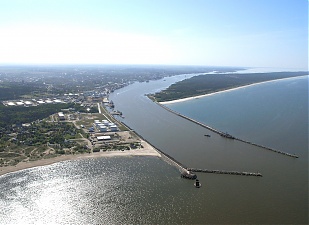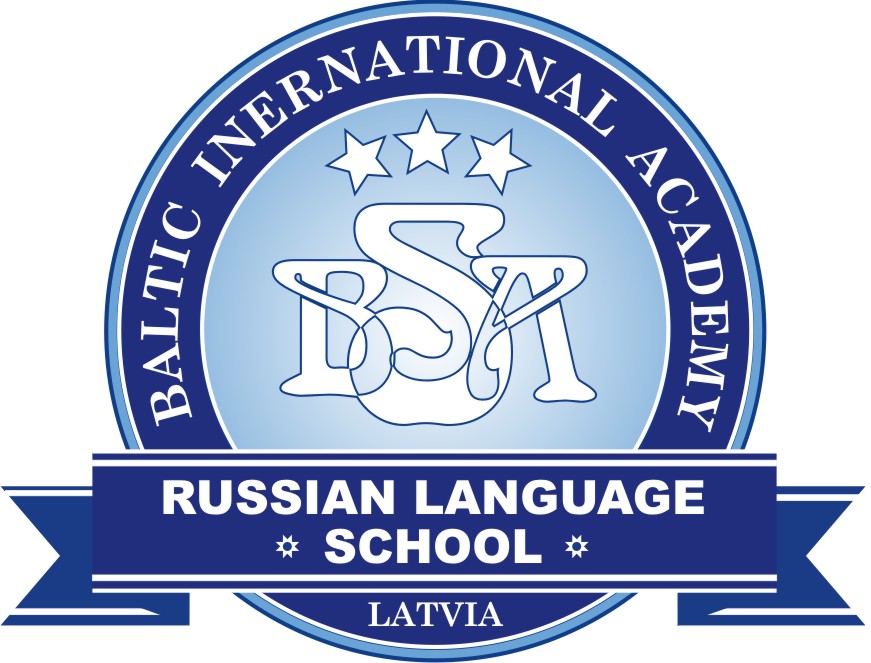Port, The Baltic Course No. 27, Transport
International Internet Magazine. Baltic States news & analytics
Monday, 02.12.2024, 16:27
Ports' development projects
 Print version
Print versionTallinn
 |
|---|
The largest project in Tallinn port is the Muuga Harbour which is being developed during the coming 5 years. The new territories will be developed in the eastern part of the port and new piers and terminals, including a container terminal, will be built.
There is an industrial park not far from the piers, and, according to the Tallinn Port’s PR Manager Sven Ratassepp, agreements have been signed with almost all the tenants of the park. BetonElement (a subsidiary of BMGS) is already building a production plant in the industrial park.
Over 5-6 years a total of EUR 200 million, mostly the port’s own funds and loans, will be invested in the Muuga Harbor Project. The share of the EU financial assistance is relatively small and accounts for EUR 23 million, said Ratassepp.
The Paldiski South Harbour is increasing the reloading of vehicles destined for the CIS countries and the Baltic States and achieved a triple growth in 2006 as compared to 2005. “This trend continues, said Ratassepp, therefore we need new territories, new piers and new parking lots. It is planned to buy additional land plots in order to expand the port’s territory. This project is to be completed in 5 years too and it will be carried out, using only our own funds”.
The reduction of general cargo’s turnover in 2007 makes the Tallinn port to use investments with additional efficiency and somewhat stretch the timetables for implementation of the new projects, said Ratassipp.
Sillamae
 |
|---|
The new Sillamae port is the closest European Union’s Baltic port to Russian territory. It’s location in the Estonian territory just 25 kilometers off the EU-Russian border offers all the necessary conditions for using Sillamae port as a reloading place for various types of cargos transported towards Europe and other countries in the world. The port started reloading cargos at the end of 2005. Currently it operates the development of six terminals, which reload oil products, liquid petrochemicals, general cargos, over-sized and ro-ro cargos, liquefied petroleum gas and liquid fertilizers, as well as a special passengers’ terminal.
Sillamae port Marketing and PR Manager, Anton Gans, said that the construction of the second part of the port, the Eastern Quay, is presently going on and about 50 hectares of land have been reclaimed from the sea. This construction phase will be completed by the end of 2007, and then the construction of the terminals would begin. There are negotiations underway with future operators of the terminals.
The liquid fertilizer terminal, Baltic Chemical Terminal (BCT) with total container capacity of 100 thousands tons and planned turnover of up to 1.7 million tons a year is also being built now. Under the BCT project the construction of a deep-water pier (depth 13 m) is included.
“The terminal’s infrastructure will be completed by the end of 2008. We hope that the terminal for reloading chemical cargos will be put into operation in summer 2008,” said A. Gans.
Riga
 |
|---|
The Riga Free Port (RFP), with its ambitious aspirations to become the main Baltic logistics’ hub has enormous plans. At present the port employs about 5,000 people and another 20,000 people are directly connected to the port’s activity. So far there are several vacant territories in the port’s area and their development will require large investments and streamlined management approaches.
The RFP’s Strategic Planning and Project Management Director, Vladimir Makarov, said that a political decision had been made to remove cargo operations from the port’s territory next to the city center; only passenger terminal will exist there. “The number of passengers at the port has seriously increased this year, said V. Makarov, mostly due to the agreement that the RFP signed with the Estonian shipping company Tallink about regular cruise-ship traffic.” He added that cruise ships were received also by Rigas Centralais Terminals (Riga Central Terminal).
Cargo operations will be moved from the city center to the Krievusala area. Mr. Makarov said that an agreement on the design development stage had been signed and its implementation had started already two months ago. The RFP is preparing presently all the documents to be submitted for the Environment Impact Assessment Office. “This project is very important for the RFP and we therefore do not want to create any problems during the approval of the project in Brussels,” said Mr. V. Makarov.
In terms of container cargos, Riga ranks second (after Klaipeda) among the Baltic ports. Currently there are two operators handling containers at the Riga port: Baltic Container Terminal (BCT) and Rigas Centralais Terminals (RCT). RCT’s Freight Manager, Mr. Konstantin Ravinskis, said that at present this terminal is ranked the biggest in Riga port for reloading containers onto flatbed rail-cars. The RCT bought new equipment this year and can now handle 1,500 TEU monthly, which is a tenfold increase in cargo turnover (from 100-150 TEU last year). In 2008 RCT plans to launch its own container train to the European East.
A new terminal to be built in the Kundzinsala area by Russians is going to create a new competition for BCT and RCT.
Mr. K. Makarov said that the port administration had submitted to the company Nacionalais konteineru terminals (NKT, National Container Terminal) the final draft of the land lease agreement for approval by the Russian partners. The RFP has commissioned a project for land reclamation (part of the land is under water). “We are waiting for NKT to begin working on the first phase of the project. We are interested in cooperation with the Latvian railway company Latvijas dzelzcels. We welcome the first container train, which is a joint venture project by Latvijas dzelzcels and TransKonteiner, a subsidiary of the Russian State Railway company, which demonstrated us the opportunities offered by such a cooperation. Now it is up to the NKT owners to decide,” said Mr. K. Makarov.
This June TransKonteiner officially opened in Latvia its first representation office in the Baltic States. Apparently, the Russian company entered the Latvian market in order to offer the whole range of container freight services in future.
The RFP has also announced two international tenders: one for renovation of the dam near the port entrance on the side of the western and eastern wharves, and another one for survey and technical designs concerning the new terminal that would serve passengers, cruise ships and ro-ro ships.
Ventspils
 |
|---|
The Ventspils Free Port (VFP) Marketing Director, Igor Udodov told the BC that a new ferry terminal was being built as part of the European Cohesion Fund project “Renovation of Access Roads to Terminals in the Ventspils Port” and is expected to be put into operation at the end of 2007. Reconstruction of the bridge across the Venta River is under way, and a new bridge has been built, relieving the old bridge from the traffic of heavy trucks. As part of the project, it is also planned to repair piers and renovate the streets leading to the port.
A universal client service center was opened at the VFP in June this year which offered greater comfort to truck drivers (showers, a café, a parking place for 50 trucks).
There is fast development in the industrial zone in Ventspils, focusing mostly on production of goods with high added value. New production facilities are being built and new companies start operating in different spheres, such as wood processing, mechanical engineering, plastic production, etc. Bucher Industries, the world’s largest producer of truck-mounted sweepers for municipal use, has chosen Ventspils as one of its business locations. The group’s Ventspils-based subsidiary, Bucher Schoerling Baltic, serves not only as an assembly shop but also as a focal point for delivery of components to all production facilities in Europe working for the Eastern market. The second stage of the project is about to be completed, and, as a result, the production will soon be moved to new premises.
This year the company Eko Majas launched production of multiple glazed units. At the end of the year Bio Venta plans to open the largest biofuel production facility in the Baltics. HBSI Production, a subsidiary of the Norwegian company Heimdal Byggsystem International, has started a project for production of structural modules for construction of residential houses in Ventspils. Izoterms, which makes metal constructions, has also started operations in Ventspils, and Belgian company Malmar Latvia has moved to new premises after completion of the first stage of construction.
A building of Ventspils High Technology Park, constructed with support from PHARE funds, was opened at the end of 2006. The park provides infrastructure and services to companies such as Ventspils Elektronikas fabrika, Inspecta Latvia, Siemens branch, etc. All companies working in the VFP enjoy the status of the free economic zone, which means tax allowances and other advantages offered by the port.
Liepaja
 |
|---|
At the end of September Containerships Group launched a new container train between Liepaja in Latvia and Moscow, which transported 45-foot (22-ton) containers. The project is supported by the Latvian and Russian transport ministries. Georgs Lansmanis, an advisor to the Latvian transport minister, said that in five years’ time there might be as many as five such trains running on the route daily.
The train will carry cargos brought by Containerships vessels to Liepaja from Helsinki, Rotterdam, Hamburg and other European logistics hubs, taking them to Moscow. “This rail service will provide operators with a reliable route connection right to the heart of the booming Russian economy,” said Sigurjon Markusson, Managing Director of Containerships, in a press release published late August.
The train will be serviced by Latvijas dzelzscels and TransKonteiner.
“As far as I know, delivery agreements have already been signed with such major producers as Philips, Masterfood, Procter&Gamble, which are ready to redirect their cargos from St. Petersburg, Kotka and Helsinki to Liepaja,” Mr. G. Lansmanis told the BC.
He said that a delegation from one of the largest investment companies representing a well-known port operator discussed in Liepaja in early October the conditions for construction of a container terminal. “It is a serious step towards increased competition in the Baltics. Liepaja, according to Lloyd’s Register experts, has the best prospects for container reloading on the Baltic Sea, regardless of the problems with the channel and the depth,” said Mr. G. Lansmanis. “Lloyd’s Register believes that Liepaja offers the shortest route to Moscow while it would take additional 9 kilometers for a ship to travel through the Irbe Strait to the Riga port. It should be said that 98% of all cargo handling is done in two regions: St. Petersburg and Moscow, although our cargo go also to other Russian regions,” said G. Lansmanis.
Klaipeda
 |
|---|
Arturas Drungilas, Klaipeda port’s Marketing Director said that the second phase in construction of the container terminal was almost completed and the terminal will be put into operation already in 2007. The terminal is being built by its operator, Klaipedos smelte.
A freight and passenger terminal is being built on a vacant lot in the port’s territory. It will be operated by Klaipedos keleiviu ir kroviniu terminalas (KKKT), a company engaged in collecting and cleaning water in the port. The terminal will take up an area of 21.1 ha and would serve tourists traveling by ro-ro ferries. It is planned that the new terminal would be able to receive up to three ferries at a time or 6-9 ferries daily. The terminal’s infrastructure will permit it to serve also cruise ships but the director said that the new terminal will not replace the cruise terminal opened in 2004.
The terminal will be opened on the occasion of the events connected to celebrations of the Lithuanian millennium anniversary in 2009.
It is planned that the number of passengers served by the port will grow four times over the period of four years, reaching one million people. Pre-design preparations are currently under way and half of the related costs (EUR 1.6 mln) will be paid by the EU. The total construction costs will be announced once the project’s design stage is completed.
Mr. Drungilas said that investments in the infrastructure (access roads, bridges, piers, etc.) will be made from the EU funds.
The marketing director said also that deepening of the entry channel to 15.5 m and the port’s inner water area to 14.5 m has to be finished during 2007. This project is being carried out at the port’s own cost.
The project for construction of new access roads to the Southern part of the port is financed from the EU funds and is to be implemented during 2007-2013.
The Baltic Course 27, Autumn 2007








 «The Baltic Course» Is Sold and Stays in Business!
«The Baltic Course» Is Sold and Stays in Business!

